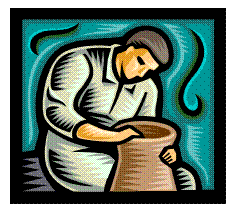Craniofacial Conditions, Cures, Symptoms and Surgeries Terms
Beyond the specific repair of orthodontic aspects of cleft lip and palate, your child’s condition may require a type of craniofacial surgery and repair/reconstruction. This specialized area of correction requires a number of complex treatments and tools, and we call them by many unusual names. We want you to know exactly what kind of changes we’re planning, and how we will carry them out. Just because the words are big or odd sounding doesn’t mean they have to be scary or unclear to you.

Alveoloplasty
Refers to surgically building up a child’s dental ridge in an area which doesn’t have enough bone to support an incoming permanent tooth. We graft bone tissue into the deficit to stimulate new bone growth.
Anesthetic
Refers to the medication which a doctor or dentist uses to put your child, your child’s mouth,
or some other part of the body asleep so he or she doesn’t feel any pain during dental or
medical procedures.
Disinfection
Refers to the cleaning process which destroys most microorganisms, but not highly resistant
forms such as bacterial and mycotic spores or the AIDS virus.
Osteotomy
Refers to the procedure in which we surgically remove or open an area of bone: os= bone, osteo= of the bone, otomy= surgical cut or removal.
Craniectomy
Refers to the procedure in which we surgically open the skull, remove malformed segments,
and reassemble the bony plates into a normal head shape: crani= skull, ectomy= section
removal.
Cranial Vault Restructure
Refers to a relatively common procedure used to repair Craniosynostosis (premature skull plate fusion), as well as a variety of other skull-shape problems due to abnormal growth or deformities.
Distraction Osteogenesis
Refers to a bone-growth stimulation procedure in which placement of a small metal device, followed by constant/increasing strong tension, slowly lengthens a bone without a bone graft.
Excise
Refers to the use of a scalpel to completely remove a growth or cancer; the sharpness of the scalpel allows extreme precision and leaves only a small, thin scar.
Flap & Flap Surgery
Refers to the surgical process our surgeons may use to restore form and function to a severely injured or disfigured patient: we can replace lost fingers/toes, sections of skin, fat, muscle, and/or skeletal support. We carefully transfer a section (flap) of living tissue including its blood supply from one place in the body to another! Using microsurgery and a microscope, we reconnect tissue areas to like areas in the new site, including tiny blood vessels, muscle fibers, bone, and fat.
Furlow Palatoplasty
Refers to surgery carried out to reposition the improperly oriented muscles in the palate:
palatal= of the palate; -plasty= surgical reconstruction.
Gingivoperiosteoplasty
Refers to surgery carried out to close up a cleft area in the gums: gingivo= of the gum(s), perio= around the edge; plasty = surgical reconstruction.
Graft
Refers to the process of replacing a particular area of tissue with similar tissue taken from another place in the body (autologous) or from a donor (demineralized prior to use, to enhance body’s acceptance of it). We also use ‘graft’ to talk about the actual substitute tissue itself.
Grommet Tubes
Refers to the tiny tubes which we surgically place into the lower area of the inner ear’s drum, to allow the ear to drain more effectively. The surgical procedure is a Myringotomy: myring= portion of the lower eardrum, otomy = removal, or creating an opening.
Haberman Feeder
Refers to the specialized feeding bottle helpful for feeding small, premature, or cleft
palate-only babies. Using a special bottle for feeding babies with clefts works
particularly well for babies who are small or premature, or who have only a cleft palate,
but whose lip and dental ridge are intact.
Head Orthosis Helmet
Refers to a skull-shaping helmet placed on a baby’s head to gently create balanced shape of an infant’s rapidly growing head.
Hydrocephalus
Refers to the build-up of too much fluid in or on the child’s brain.
Iliac Crest
Refers to the hip bone from which our Surgeon may take tissue for transplantation to a bone graft area.
Implant
Refers to an artificial structure inserted surgically into the body tissue to replace a
particular part; e.g., implants which replace teeth, eyes, or middle/inner ears.
IV
Refers to a tiny tube by which we can give your child medicine, nutrition or additional
fluids before, during and after surgery; we place the tube under the skin and into a
primary vein on the back of your child’s wrist, where it is almost unnoticeable.
Markings
Refers to the marks that we make on the surgical area prior to beginning the procedure (most craniofacial procedures); can also refer to the marks made for measurement and comparison on x-rays or geometric drawings (orthodontic work).
Mead-Johnson Cleft Palate Nurser
Refers to an inexpensive, soft, squeezable baby bottle which helps in feeding an infant with a cleft who cannot suckle hard enough to get the nutrition needed.
Midface Hypoplasia
Refers to the condition in which the upper two-thirds of the face grows extremely slow compared to the normal growth rate: hypo= under, less, greatly reduced; plasia=growth.
Minimally Invasive Surgery
Refers to a surgical procedure designed to interfere as little as possible with the patient’s body and functions. Our surgeons use a long, thin rod which is lit at the end to direct their work inside the body, rather than opening up the whole area. It benefits your child in that there is considerably less surgery/anesthesia time, less hospital time, and less blood loss.

Pre-Op
Refers to the important preparation instructions that we provide and help you carry out
on behalf of your child, both at home prior to surgery and at the hospital the day of
the procedure.
Post-Op
Refers to the important care and treatment instructions/cautions we provide both while your child is in the hospital and throughout your child’s recovery at home.
Recovery
Refers to the time period after surgery in which your child comes out of anesthesia and recovers his or her normal abilities; it also refers to the time period after surgery (days, weeks, months) during which the procedural area heals fully.
Rigid External Distraction
Refers to a special facial advancement/skeletal repositioning procedure in which we surgically affix an adjustable frame-like device to the skull at the temples. It also connects to the patient’s jaw. The patient/parent follows a particular prescription regarding the proper number of turns of the adjusting screws per day/week, gradually increasing the tension between the frame and the face. Over a period of months, the bony tissue under tension responds by generating new bone, thus allowing the entire skeletal area to come forward.
Sculpt
Refers to the specific, careful surgical shaping of part of the body to create an ideal appearance.
Sphincter Pharyngoplasty
Refers to the surgical procedure we use for lessening hypernasal speech.
Suture
Refers to either:
a) the thin fibrous strand our Surgeon uses to sew tissues together after surgery or
b) one of many thin, immovable lines marking the junctions of the skull’s bony plates.